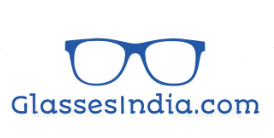In many workplaces, employees are required to wear protective eyewear as part of their safety gear. This is because the eyes are highly vulnerable to a wide range of hazards that can result in permanent vision loss or damage. In this article, we'll explore the common workplace hazards that require protective eyewear and why it's essential for workers to wear them.
-
Chemicals Chemicals are one of the most significant hazards in many workplaces, especially those that involve manufacturing, construction, and laboratories. Chemicals can cause severe damage to the eyes and lead to permanent blindness. Protective eyewear is necessary to prevent chemical splashes, fumes, and vapors from entering the eyes.
-
Dust and debris Working in an environment that produces dust and debris can be hazardous to the eyes. It's common in construction, woodworking, and metalworking industries. Particles can cause eye irritation, scratches, and corneal abrasions, leading to long-term vision problems. Protective eyewear with side shields can effectively protect against this hazard.
-
Radiation Radiation from welding, lasers, and UV light can cause severe damage to the eyes. Welders, in particular, are at high risk of eye damage from the bright light produced during welding. Specialized eyewear with tinted lenses can protect against this hazard.
-
Impact Flying debris and falling objects can cause severe eye injuries in workplaces such as construction, manufacturing, and mining. Safety glasses with polycarbonate lenses can provide adequate protection against impact hazards.
-
Electrical hazards Electricity can cause arc flashes and explosions that can lead to severe eye damage. Workers dealing with electricity must wear proper eye protection to safeguard against electrical hazards.
-
Heat hazards Heat from molten metals, steam, and other hot substances can cause burns and eye injuries. Workers in foundries, metal casting, and glass manufacturing industries are at high risk of heat hazards. Specialized eyewear with heat-resistant lenses can offer adequate protection.
-
Biological hazards Workers in healthcare, laboratory, and agriculture industries are exposed to biological hazards such as viruses, bacteria, and fungi. These hazards can enter the eyes and cause infections, leading to severe eye damage. Protective eyewear is necessary to prevent these hazards from entering the eyes.
-
Optical radiation hazards Optical radiation hazards include infrared radiation, ultraviolet radiation, and visible radiation. Exposure to these hazards can cause eye damage or vision loss. Protective eyewear with tinted lenses can effectively protect against optical radiation hazards.
-
Flying sparks and metal slivers Working with metal can produce flying sparks and slivers that can cause eye injuries. Workers in metal fabrication, welding, and grinding industries are at high risk of this hazard. Protective eyewear with side shields and tinted lenses can offer adequate protection.
-
Extreme cold and hot temperatures Extreme cold and hot temperatures can cause eye injuries, especially for workers in cold storage and foundry industries. Protective eyewear with insulated lenses can protect against extreme temperatures.
In conclusion, protective eyewear is crucial in protecting workers' eyes from various hazards in the workplace. Employers must provide adequate eye protection to their employees and ensure that it fits properly and is comfortable to wear. Workers must also take responsibility for their eye safety by wearing protective eyewear and following safety guidelines. Remember, your eyes are essential, and protecting them is critical for your long-term vision health.
